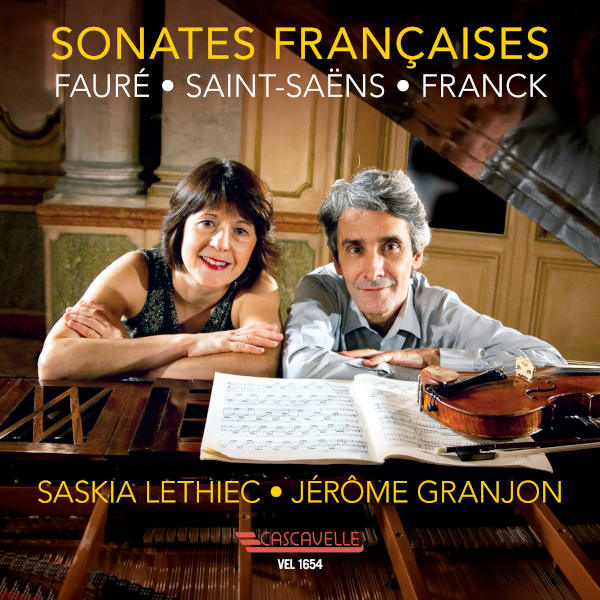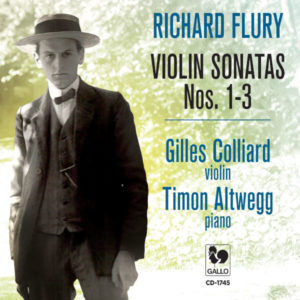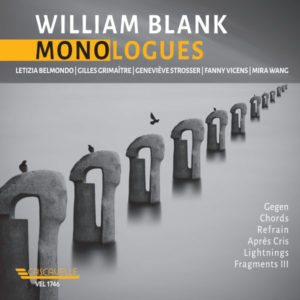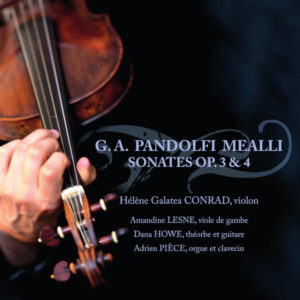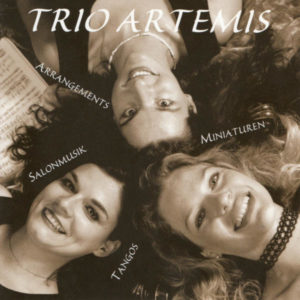Extraits / Excerpts
Fauré - Saint-Saëns - Franck - French Violin Sonatas - Saskia Lethiec, Violin - Jérôme Granjon, Piano
Gabriel FAURÉ: Violin Sonata No. 1 in A Major, Op. 13: I. Allegro molto – II. Andante – III. Allegro vivo – IV. Allegro quasi presto – Camille SAINT-SAËNS: Violin Sonata No. 1 in D Minor, Op. 75: I. Allegro agitato – Adagio – II. Allegretto moderato – Allegro molto – César FRANCK: Violin Sonata in A Major, FWV 8: I. Allegretto ben moderato – II. Allegro – III. Recitativo-Fantasia. Ben moderato – IV. Allegretto poco mosso.
Saskia Lethiec, Violin (www.saskialethiec.com) – Jérôme Granjon, Piano (www.jerome-granjon.com)
Sound recording: Etienne Collard (www.etiennecollard.org)
Does this record help us go back to a special moment in the history of music?
Yes, a little bit. For us French musicians, there is something artistically moving in thinking about what happened to our country’s music in the aftermath of the tragedies of 1870 and 1871. In the nascent Third Republic, a few talented composers, led by the energetic Camille Saint-Saëns, set out to challenge the Austro-German supremacy in the creation of great music. Johannes Brahms was not entirely wrong when he claimed “Es gibt kein französischer Komponist”, as post-Beethovenian music and Italian opera dominated in Paris during the Second Empire. National symphonic music was of little importance, but this was also true of chamber music, since opera was the only thing that really mattered. There was a kind of springtime for creation in France when the National Society for Music was founded in 1871.
But tell us more precisely why you chose to play these three sonatas?
First of all, we already cherished Franck’s sonata and we played it when we began our collaboration as a duo many years ago. It unites us deeply. Because of its magnificent architecture, and the passion that runs through it from beginning to end, it is a universal masterpiece. Then we were struck by the fact that in the momentum of this period of musical renaissance, in the midst of the blossoming of chamber music, these three sonatas, which happen to be among the most beautiful pieces in French music, were composed in a relatively short period of time. They quickly took their place as so many summits of the French repertoire for violin and piano, even if the Saint-Saëns sonata is less frequently played than the other two. Beyond their very strong identities and their differences, which are, moreover a reflection of the personalities of their creators, linked but so different, they resonate together aesthetically thanks to the cross influences that one finds between them.
- Topic Sonates Françaises -- Loic Gaillot, Filmmaker
- Gabriel FAURÉ: Violin Sonata No. 1 in A Major, Op. 13: III. Allegro vivo -- Loic Gaillot, Filmmaker
- Camille SAINT-SAËNS: Violin Sonata No. 1 in D Minor, Op. 75: I. Allegro agitato -- Loic Gaillot, Filmmaker
- César FRANCK: Violin Sonata in A Major, FWV 8 -- Loic Gaillot, Filmmaker
- Categories
- Composers
- Interprets
- Booklet
